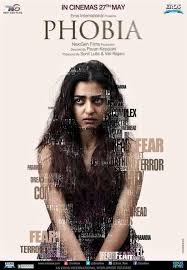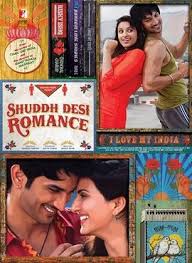The feeling of being trapped within your own mind is far more terrifying than any external force, and this film encapsulates that fear perfectly. Starring Radhika in a riveting role, this psychological thriller set in present-day Mumbai brings a chilling exploration of agoraphobia. Directed by Pavan Kripalani, it delves into the realms of psychological horror, leaving you questioning the boundaries between reality and delusion. The apartment, a seemingly safe space, transforms into a nightmarish prison, setting the stage for a suspenseful journey into the human psyche.
The story revolves around Mehak, a gifted artist who, after a traumatic incident, develops agoraphobia—a severe fear of open spaces and social interaction. Confined to her apartment, Mehak begins to experience strange and terrifying occurrences. Her paranoia intensifies, making her doubt whether these incidents are a product of her traumatized mind or if there’s something sinister lurking within her apartment. The film keeps the audience on edge as it unravels Mehak’s unraveling, making us question what’s real and what’s a figment of her damaged psyche.
One of the most striking elements of the film is Radhika’s performance. Known for her versatility, Radhika delivers a tour de force performance that anchors the entire narrative. Her portrayal of Mehak’s descent into fear and paranoia is raw, unnerving, and utterly believable. She doesn’t overplay the role but gives a nuanced performance, making her vulnerability palpable. In one scene, where she frantically tries to open the door but is paralyzed by her fear of stepping out, Radhika’s facial expressions and body language convey more than words ever could. Her performance alone elevates the film from a regular horror-thriller to an intense character study of someone battling a mental illness.
Cinematography plays a significant role in creating the film’s claustrophobic atmosphere. The confined space of the apartment is shot in a way that makes it feel both familiar and eerie, often using tight, close-up shots to emphasize Mehak’s isolation. Jayakrishna Gummadi’s camera work adds layers to the story by using the apartment’s space to mirror Mehak’s mental state—at times, the apartment feels expansive and empty, and at others, it feels suffocating, as if the walls are closing in. The lighting, too, adds to the tension, with dark corners and shadows enhancing the suspense, while the frequent play of light and dark reflects the duality of Mehak’s perception of reality.
The film’s sound design deserves special mention. Rather than relying on jump scares, the eerie, ambient sounds and subtle creaks in the apartment build a slow-burning tension that keeps you on edge throughout. The sound of footsteps, doors creaking, and the unnerving silence in certain scenes contribute to the feeling of impending doom. The score by Daniel B. George is haunting and works perfectly to amplify the tension without overpowering the narrative. The use of silence in key moments is particularly effective, allowing the audience to feel the suffocating fear Mehak experiences.
Kripalani’s direction is sharp, balancing the psychological and horror elements deftly. He never rushes the plot, allowing the tension to build organically. The editing is crisp, particularly in the sequences where Mehak’s paranoia reaches its peak, blending past trauma with present-day fears. Kripalani masterfully handles the shifts between reality and hallucination, keeping the audience guessing what is real and what’s imagined. The direction ensures that the film isn’t just a regular horror story but an exploration of fear itself.
Another notable aspect of the film is its exploration of mental health, particularly agoraphobia. It doesn’t treat Mehak’s condition as a mere plot device but delves deep into the impact trauma has on her daily life. The film doesn’t trivialize her fears; instead, it forces the audience to experience her anxiety and paranoia. The script by Arun Sukumar and Kripalani is tight, with dialogues that are sparse but effective, and it skillfully intertwines horror with the psychological dimensions of trauma, making the narrative layered and thought-provoking.
The minimal use of special effects works in the film’s favor. Instead of over-the-top visual scares, the film relies more on creating psychological tension. The apartment itself becomes a character, with its locked doors and hidden corners adding to the sense of dread. Every shadow and sound contributes to the suspense, and the lack of overt supernatural elements makes the horror feel more real and grounded in Mehak’s internal struggle.
As for costume design, Mehak’s simple, everyday attire adds to the realism of the character. Her unkempt hair, loose clothing, and makeup-free face reflect her mental and emotional state, making her feel relatable and grounded. The set design, too, contributes to the film’s tone. The apartment, with its clutter and closed-off windows, reflects Mehak’s trapped existence, both physically and emotionally.
Overall, this film is a haunting psychological thriller that relies more on atmosphere and performance than typical horror tropes. Radhika’s stellar portrayal of a woman haunted by her own mind is reason enough to watch it. The direction, cinematography, and sound design all come together to create an unsettling, claustrophobic experience that lingers long after the credits roll. It’s not a typical horror film with cheap thrills and scares but rather a deeply unsettling look at trauma, fear, and the fragility of the human mind.
For those who enjoy psychological thrillers with a strong emotional core, this is a must-watch. It’s a slow burn, but the payoff is worth it, especially if you appreciate horror that delves into the complexities of the mind. The film offers a chilling commentary on mental health and trauma, wrapped in a suspenseful, eerie narrative that will leave you thinking long after it ends. Highly recommended for those who prefer psychological tension over traditional scares.







